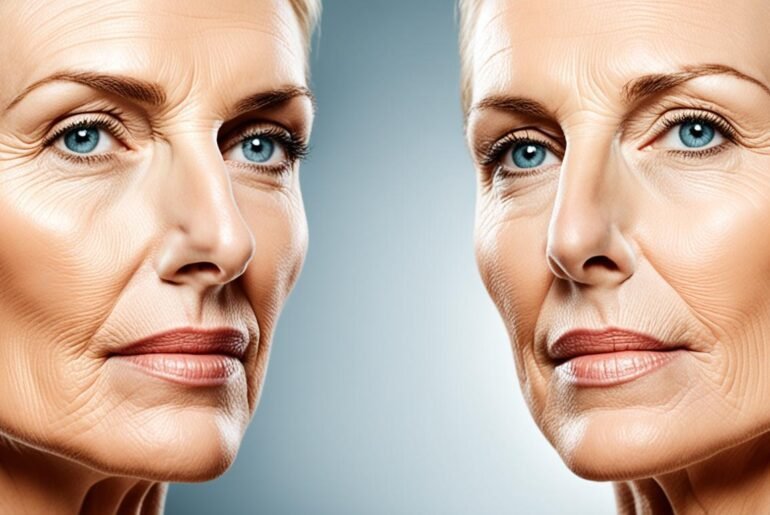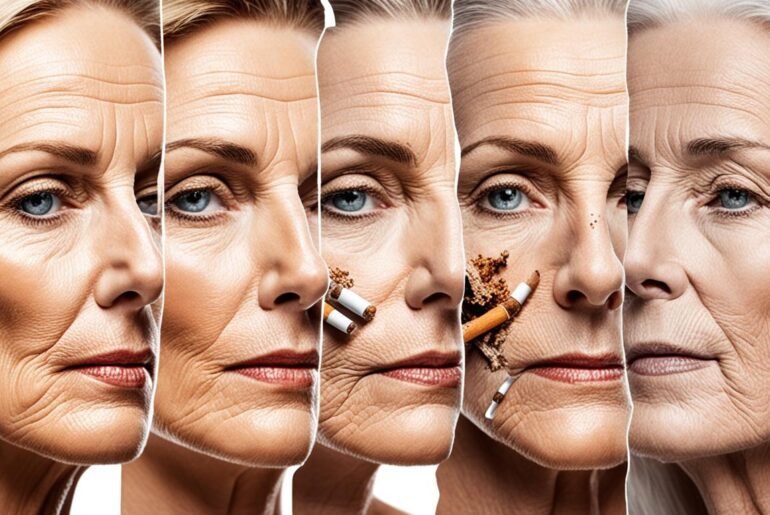Did you know that smoking can have a devastating impact on your skin? It’s not just about the increased risk of wrinkles and sagging – smoking can actually accelerate the aging process, leading to premature skin aging and a host of other skin issues.
When you smoke, the harmful chemicals in cigarettes attack your skin from the inside out. Nicotine constricts blood vessels, reducing oxygen and nutrient supply to the skin, resulting in dull, dry, and discolored skin. The chemicals in cigarettes also break down collagen and elastin, the proteins responsible for maintaining skin’s firmness and elasticity, leading to lines, wrinkles, and sagging. Additionally, smoking increases the risk of skin cancer and can worsen existing skin conditions such as psoriasis and eczema.
But the good news is that it’s never too late to reverse the damaging effects of smoking on your skin. By implementing a few key strategies, you can restore your skin’s health and regain a youthful complexion.
Key Takeaways:
- Smoking can accelerate the aging process and lead to premature skin aging.
- The chemicals in cigarettes constrict blood vessels, reducing oxygen and nutrient supply to the skin.
- Smoking breaks down collagen and elastin, causing lines, wrinkles, and sagging.
- Quitting smoking, adopting a skincare routine, and considering professional treatments can help reverse the damaging effects of smoking on the skin.
- By taking steps to reverse smoking effects, you can improve the health and appearance of your skin.
How Cigarettes Affect Your Skin
Nicotine in cigarettes constricts blood vessels, leading to dull and dry skin. The chemicals in cigarettes break down collagen and elastin, resulting in lines, wrinkles, and sagging. Smokers are also more susceptible to developing age spots from sun damage. These effects contribute to premature skin aging and a more aged appearance compared to non-smokers.
Smoking has a direct impact on the health and appearance of your skin. The nicotine present in cigarettes causes blood vessels to constrict, reducing blood flow to the skin. This diminishes the delivery of oxygen and nutrients to the skin cells, leading to dullness and dryness. The lack of proper blood supply to the skin also affects its ability to repair and regenerate, resulting in slower wound healing and a compromised skin barrier.
Furthermore, the chemicals found in cigarettes, such as tar and carbon monoxide, contribute to the breakdown of collagen and elastin in the skin. These proteins are essential for maintaining skin elasticity, firmness, and overall youthfulness. As a result, smokers are more prone to developing wrinkles, fine lines, and sagging skin.
In addition to collagen and elastin depletion, smoking also increases the production of enzymes that break down these proteins. This further accelerates the aging process and contributes to premature skin aging. The cumulative effects of smoking can lead to a more aged appearance compared to non-smokers of the same age.
Smoking also makes the skin more susceptible to damage from the sun’s harmful UV rays. The combination of nicotine and sun exposure can lead to the development of age spots, also known as liver spots or sunspots. These dark patches of pigmentation can appear on areas of the skin that are regularly exposed to the sun, such as the face and hands.
Overall, the negative effects of smoking on the skin are extensive. From constricted blood vessels to collagen and elastin breakdown and the increased risk of age spots, smoking accelerates the aging process and contributes to a tired, aged appearance. Quitting smoking and adopting a comprehensive skincare routine are essential steps in reversing these effects and promoting healthier, more youthful skin.
Reversing Cigarette Skin Damage
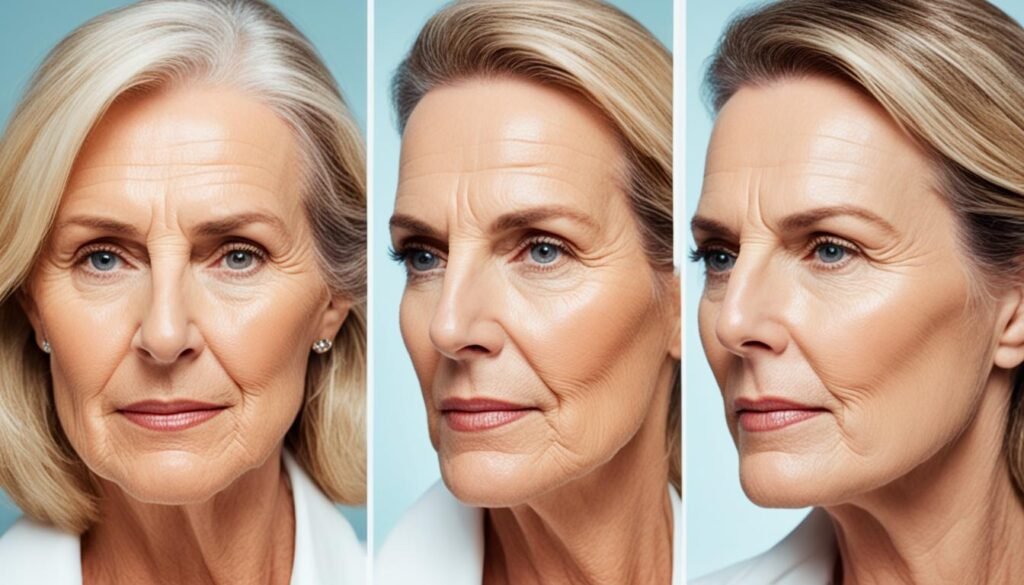
To reverse the damage caused by smoking on your skin, the first step is to quit smoking. By quitting, you allow your skin to begin the healing process and improve its overall health. In addition to quitting, adopting a healthy diet that is rich in vitamins A and C can further assist in skin recovery. These vitamins play a crucial role in promoting skin cell regeneration and collagen production, which can help reverse the effects of smoking.
Alongside a healthy diet, establishing a skincare regimen is essential. This regimen should include cleansing, exfoliating, and moisturizing your skin daily. Cleansing removes impurities and reduces the buildup of toxins caused by smoking. Exfoliating helps remove dead skin cells, allowing for better absorption of skincare products. Moisturizing is crucial to replenish hydration and restore the skin’s natural barrier.
When choosing skincare products, focus on antioxidant-rich formulations. Antioxidants help fight free radicals and protect the skin from further damage. Look for products that contain ingredients such as vitamin C, green tea extract, or niacinamide. These antioxidants can help rejuvenate the skin and promote a healthier complexion.
Furthermore, professional treatments can be effective in reversing cigarette skin damage. Laser skin resurfacing can help reduce wrinkles and improve skin tone and texture. Chemical peels exfoliate the skin and remove the damaged outer layers, revealing fresher and more youthful skin. BroadBand Light (BBL) treatments target pigmentation issues caused by smoking, such as sunspots and age spots. Additionally, fillers and wrinkle injections can help restore lost volume and smooth out deep wrinkles.
It’s important to consult with a skincare professional to determine which treatments are best suited to your specific needs. They can create a personalized treatment plan that addresses your concerns and helps restore your skin’s health and appearance.
Summary:
Reversing cigarette skin damage is possible through a combination of quitting smoking, adopting a healthy diet, following a skincare regimen, and considering professional treatments. Quitting smoking allows the skin to begin healing itself, while a healthy diet rich in vitamins A and C supports skin recovery. Establishing a skincare routine with antioxidant-rich products further aids in rejuvenating the skin. Professional treatments like laser skin resurfacing, chemical peels, BBL, and fillers/wrinkle injections offer additional options for reversing skin damage and promoting healthier skin.
| Benefits of Reversing Cigarette Skin Damage | How to Achieve Them |
|---|---|
| Improved complexion | Quit smoking, follow a healthy diet, and establish a skincare regimen |
| Reduced wrinkles and sagging | Adopt healthy lifestyle habits and consider professional treatments |
| Restored collagen production | Quit smoking, use antioxidant-rich products, and undergo professional treatments |
| Enhanced skin tone and texture | Follow a skincare routine, exfoliate regularly, and consider professional treatments |
Professional Skin Rejuvenation Treatments
When it comes to reversing the effects of smoking on the skin, professional skin rejuvenation treatments can be highly effective. These treatments target specific skin concerns caused by smoking, such as wrinkles, uneven texture, and discoloration, to restore a healthier and more youthful appearance.
Laser Skin Resurfacing
Laser skin resurfacing is a popular treatment for repairing cigarette skin damage. This procedure uses laser technology to remove damaged skin layers and stimulate the production of new skin cells. The result is smoother, more even-toned skin with diminished wrinkles and fine lines.
Chemical Peels
Chemical peels are another effective option for rejuvenating smoking-damaged skin. By applying a chemical solution to the skin, these peels exfoliate the outer layers, promoting cell turnover and collagen production. The result is a softer, more hydrated complexion with reduced dullness and discoloration.
BBL (Broadband Light) Treatments
BBL treatments, also known as intense pulsed light (IPL) therapy, target the visible blood vessels and redness that can occur as a result of smoking. The high-intensity light energy selectively heats and destroys these blood vessels, leading to a more even skin tone and improved overall complexion.
Fillers and Wrinkle Injections
Smoking can accelerate the aging process, causing a loss of volume and deep wrinkles. Fillers and wrinkle injections, such as hyaluronic acid or Botox, can help restore lost volume and soften the appearance of deep wrinkles, resulting in a more youthful and rejuvenated look.
Professional skin rejuvenation treatments offer targeted solutions for reversing cigarette skin damage. Whether through laser skin resurfacing, chemical peels, BBL, or fillers and wrinkle injections, these treatments can provide noticeable anti-aging results, helping individuals regain their confidence and achieve healthier, more vibrant-looking skin.
Choosing the Right Treatment
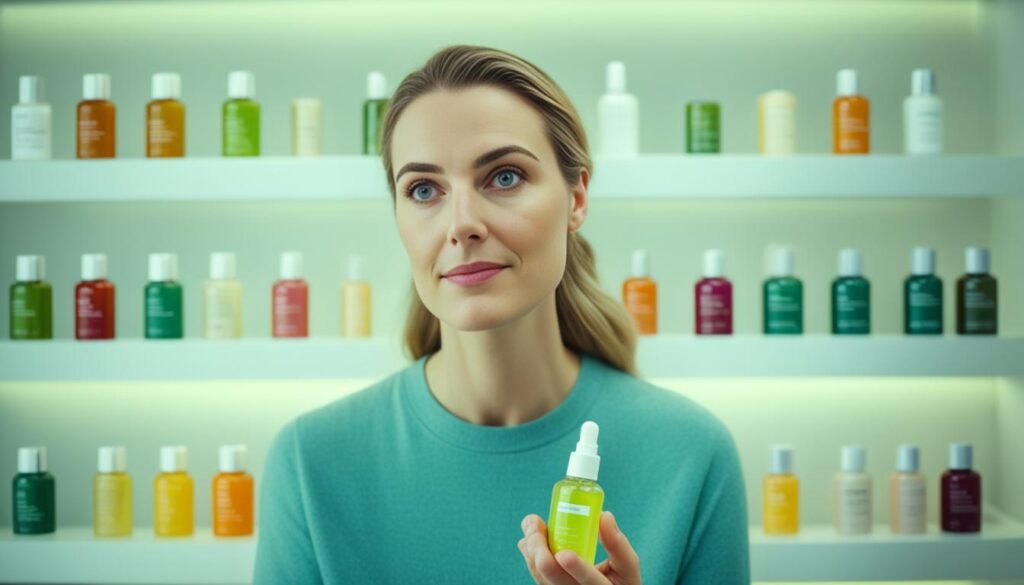
When it comes to reversing cigarette skin damage, choosing the right treatment is crucial for achieving optimal results. Consulting with a skilled plastic surgeon is the first step towards creating a personalized treatment plan tailored to your specific needs. By considering your individual skin concerns and desired outcomes, a plastic surgeon can recommend the most effective procedures and therapies to help you achieve younger-looking skin.
“By seeking professional advice, patients can achieve younger-looking skin more effectively and efficiently.”
A plastic surgeon is experienced in understanding the unique challenges that smokers face in reversing skin damage. They have the expertise to assess your skin condition and recommend appropriate treatments that address your specific concerns.
Whether you require laser skin resurfacing, chemical peels, or injectable fillers, a plastic surgeon can guide you through the process and help you make informed decisions regarding your treatment options. They will work closely with you to create a personalized treatment plan that addresses your specific needs, taking into account factors such as your overall health, desired outcomes, and budget.
Benefits of Choosing a Plastic Surgeon
Choosing a plastic surgeon for your skin rejuvenation journey offers several advantages:
- Expertise: Plastic surgeons specialize in cosmetic procedures and have extensive knowledge of the latest techniques and innovations in the field of aesthetic medicine.
- Customization: Plastic surgeons take a personalized approach to treatment, tailoring their recommendations to your specific needs and goals.
- Comprehensive Care: Plastic surgeons provide comprehensive care throughout all stages of the treatment process, ensuring you receive the highest level of medical attention and support.
- Safety: Plastic surgeons operate in accredited facilities, adhering to strict safety protocols to minimize the risk of complications.
By choosing a plastic surgeon for your skin rejuvenation journey, you can rest assured that you are in the hands of a qualified professional who will prioritize your safety and satisfaction.
Summary
When it comes to reversing cigarette skin damage, selecting the right treatment is crucial. By consulting with a plastic surgeon and creating a personalized treatment plan, you can embark on a journey towards achieving younger-looking skin. The expertise and guidance of a plastic surgeon will ensure that you receive tailored recommendations and comprehensive care, leading to more effective and efficient results. Take the first step towards rejuvenating your skin by choosing the right treatment options for your specific needs.
The Negative Impact Of Smoking On Skin Health
Smoking has a profoundly adverse effect on skin health. The harmful chemicals in cigarettes, including toxins like formaldehyde, cyanide, and carbon monoxide, pose a significant risk to the skin’s well-being.
One of the primary negative impacts is the constriction of blood vessels caused by smoking. This constriction reduces the supply of oxygen and essential nutrients to the skin, impairing its ability to function optimally.
Collagen and elastin, essential proteins responsible for maintaining the skin’s firmness and elasticity, also suffer as a result of smoking. The chemicals in cigarettes disrupt the production of these proteins, leading to sagging skin and the development of wrinkles.
Moreover, smoking can contribute to pigmentation issues, such as a gray or sallow complexion. These changes in skin color are often a consequence of the toxins present in cigarettes.
In addition to these visible effects, smoking can exacerbate existing skin disorders, including psoriasis and eczema. The toxins absorbed through smoking can worsen the symptoms of these conditions, causing discomfort and further skin damage.
The negative impact of smoking on skin health extends beyond surface-level aesthetics. It can manifest in various aging symptoms, such as deep wrinkles, fine lines, and overall skin deterioration. Furthermore, the risk of developing other skin disorders increases with smoking.
To fully comprehend the detrimental effects of smoking on the skin, it is important to highlight the specific consequences:
– Constricted blood vessels leading to reduced oxygen and nutrient supply.
– Decreased production of collagen and elastin, resulting in sagging and wrinkles.
– Pigmentation issues, such as a gray or sallow complexion.
– Aggravation of existing skin disorders, such as psoriasis and eczema.
– Various aging symptoms and a higher risk of developing other skin disorders.
The Negative Impact of Smoking on Skin Health – Key Points:
- Toxins, like formaldehyde, cyanide, and carbon monoxide, harm the skin.
- Smoking constricts blood vessels, reducing oxygen and nutrient supply.
- Collagen and elastin production decreases, leading to sagging skin and wrinkles.
- Pigmentation issues, such as a gray or sallow complexion, can occur.
- Smoking can worsen existing skin disorders, like psoriasis and eczema.
- Various aging symptoms and a higher risk of developing skin disorders are evident.
Understanding the negative impact of smoking on skin health highlights the urgency of adopting measures to protect and restore skin vitality. Quitting smoking, adopting a comprehensive skincare routine, and considering professional treatments can help alleviate and reverse the damage caused by smoking.
How Skin Repairs Itself After You Quit Smoking
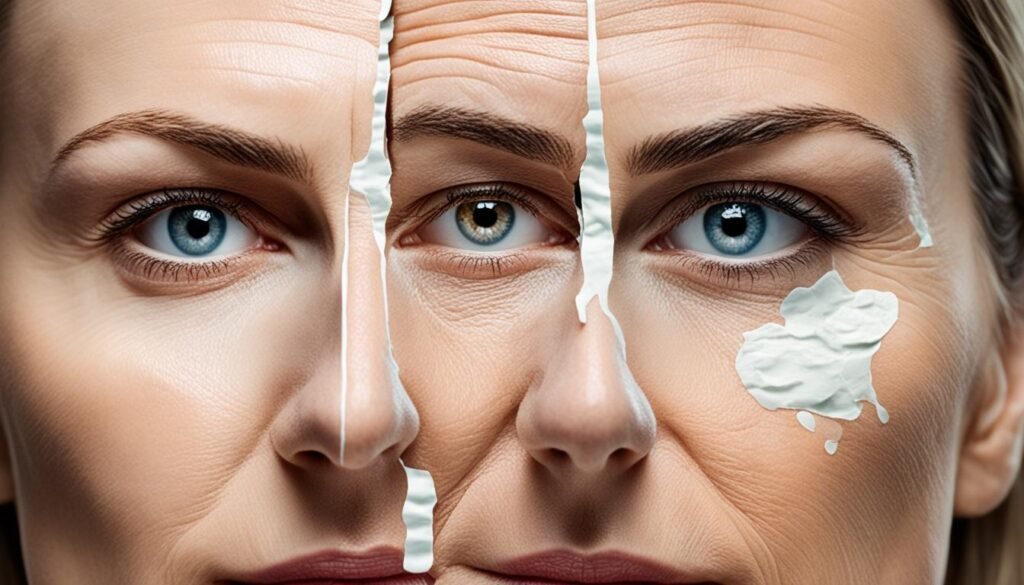
When you quit smoking, your skin embarks on a remarkable journey of repair and rejuvenation. The harmful effects of nicotine, which constricts blood vessels and hampers oxygen supply, gradually diminish as you eliminate this toxin from your system. As a result, several positive changes occur within your skin, leading to a healthier and more vibrant complexion.
The Role of Skin Cell Turnover
One of the key mechanisms through which your skin repairs itself after quitting smoking is skin cell turnover. Nicotine disrupts the natural turnover process by slowing down the shedding of old skin cells and the production of new ones. However, when you quit smoking, this process normalizes and starts functioning at an optimal level. Increased turnover of skin cells promotes a fresher and more youthful appearance by continually replacing older, damaged cells with newer ones.
Boosting Oxygen Flow and Collagen Production
Quitting smoking also helps improve oxygen flow to your skin, allowing it to receive the vital nutrients it needs to thrive. Nicotine restricts blood vessels, reducing the amount of oxygen transported to the skin. However, as you quit smoking, blood vessels dilate, allowing for improved oxygen delivery. This increased oxygen flow supports collagen production, a key structural component of your skin. Collagen lends strength, elasticity, and firmness to your skin, promoting a more youthful and supple complexion.
Slowing Down the Aging Process
Smoking accelerates the aging process and can lead to premature wrinkles, fine lines, and sagging skin. However, when you quit smoking, the aging process starts to slow down. Normalized collagen production, improved oxygen flow, and increased skin cell turnover collectively work to combat the signs of aging. By quitting smoking, you give your skin the chance to recover and naturally reverse the damage inflicted by smoking.
Restoring Healthy Color
Yet another benefit of quitting smoking is the restoration of healthy color to your skin. Nicotine-induced constriction of blood vessels can cause a pale or dull complexion. However, after quitting smoking, blood vessels dilate and allow for improved blood flow, resulting in a healthy, radiant skin tone. The return of this natural color enhances your overall appearance, contributing to a more youthful and vibrant look.
By quitting smoking, you provide your skin with the opportunity to repair and rejuvenate itself from the damaging effects of smoking. Skin cell turnover increases, oxygen flow improves, collagen production normalizes, and healthy color returns, reversing the negative impact of smoking and promoting a healthier, more youthful complexion.
Benefits of quitting smoking

Quitting smoking not only has numerous health benefits but also has a positive impact on your skin. When you quit smoking, you give your skin the opportunity to repair and rejuvenate itself, resulting in a healthier and more youthful appearance.
“Quitting smoking not only has numerous health benefits but also has a positive impact on your skin.”
One of the visible benefits of quitting smoking is the improvement in complexion. Age spots, discoloration, and uneven skin tone caused by smoking can decrease over time, revealing a more even and vibrant complexion.
Additionally, smoking is a major contributor to the signs of aging such as wrinkles, fine lines, and sagging skin. When you quit smoking, you can experience a reduction in these aging symptoms, giving your skin a more youthful and refreshed appearance.
A significant benefit of quitting smoking is the restoration of collagen production. Smoking damages collagen, leading to a loss of skin elasticity and firmness. By quitting smoking, you allow your body to restore collagen production, resulting in plumper and more supple skin.
Benefits of Quitting Smoking on Skin
| Benefit | Description |
|---|---|
| Improved Complexion | Reduction of age spots and discoloration, resulting in a more even and vibrant complexion. |
| Reduced Signs of Aging | Visible reduction in wrinkles, fine lines, and sagging skin for a more youthful appearance. |
| Restored Collagen Production | Quitting smoking allows collagen production to normalize, leading to plumper and more supple skin. |
Quitting smoking provides lasting benefits for your skin. The improved complexion, reduced signs of aging, and restored collagen production contribute to a healthier and younger-looking appearance. Take the step towards a smoke-free life and reap the rewards of healthier skin.
Tips for restoring your skin
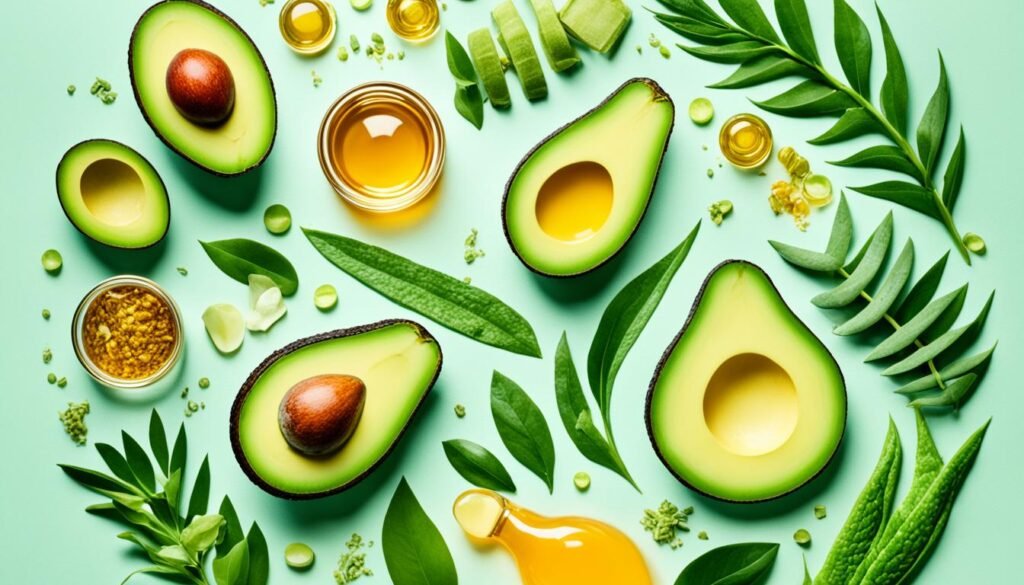
In addition to quitting smoking, there are several tips to help restore the health and appearance of your skin. By incorporating these practices into your daily routine, you can promote a revitalized complexion. Here are some essential tips:
Maintain a Balanced Diet
Eating a balanced diet plays a crucial role in restoring and maintaining healthy skin. Include a variety of fruits, vegetables, whole grains, lean proteins, and healthy fats in your meals. These nutrient-rich foods provide the vitamins and minerals necessary for skin rejuvenation.
Engage in Regular Exercise
Regular exercise not only benefits your overall health but also contributes to restored skin vitality. Physical activity promotes blood circulation, which delivers essential nutrients and oxygen to your skin cells. Aim for at least 30 minutes of moderate exercise, such as brisk walking or cycling, most days of the week.
Prioritize Quality Sleep
Adequate sleep is essential for the restoration and regeneration of your skin. While you sleep, your body repairs damaged cells, including those in your skin. Aim for 7-9 hours of quality sleep each night to promote optimal skin health.
Protect Your Skin with Sunscreen
Sunscreen is a critical component of any skin restoration routine. It helps prevent further damage from harmful UV rays, allowing your skin to heal and regenerate. Choose a broad-spectrum sunscreen with an SPF of 30 or higher and apply it generously to all exposed areas of your skin, even on cloudy days.
Establish a Skincare Routine
A consistent skincare routine is vital for restoring your skin. Cleanse your face twice a day to remove dirt and impurities. Exfoliate once or twice a week to promote cell turnover. Moisturize daily to keep your skin hydrated. Use skincare products containing antioxidants, such as vitamin C serums or retinol, to help rejuvenate and repair your skin.
Consider In-Office Treatments
In addition to at-home skincare, in-office treatments can provide targeted solutions for skin restoration. Consult with a dermatologist or aesthetician to explore options such as microneedling, dermal fillers, and laser resurfacing. These treatments can address specific skin concerns and enhance the overall restoration process.
By following these tips, you can support the restoration of your skin’s health and appearance, leaving you with a glowing, revitalized complexion.
Conclusion
Reversing smoking effects on the skin is a multi-faceted process that involves quitting smoking, adopting a skincare routine, and considering professional treatments. By taking the crucial step of quitting smoking, you provide your skin with the opportunity to gradually heal and rejuvenate itself. However, simply quitting is not enough; implementing a consistent skincare routine is vital to enhance your skin’s health.
A comprehensive skincare routine should include cleansing, exfoliating, moisturizing, and using suitable products tailored to your skin’s needs. These steps help to replenish lost moisture, improve elasticity, and protect against further damage. By following a consistent skincare regimen, you can restore your skin’s natural radiance and achieve a healthier, more youthful appearance.
In addition to a skincare routine, professional treatments offer intensive options for skin rejuvenation. Procedures such as laser skin resurfacing, chemical peels, and other non-invasive treatments can effectively target and reverse the effects of smoking on the skin. These professional interventions can provide significant improvements, accelerating the skin’s healing process and helping to achieve optimal results.
By combining the benefits of quitting smoking, maintaining a skincare routine, and exploring professional treatments, you can effectively reverse smoking effects on your skin and enjoy a healthier, more vibrant complexion. Take the necessary steps to prioritize your skin’s health, and you will be rewarded with lasting results and a renewed sense of confidence.
FAQ
How does smoking affect the skin?
Smoking constricts blood vessels, leading to dull and dry skin. The chemicals in cigarettes break down collagen and elastin, resulting in wrinkles and sagging. Smokers are also more susceptible to age spots from sun damage.
Can smoking damage to the skin be reversed?
Yes, by quitting smoking and adopting a skincare routine, you can reverse the effects of smoking on your skin. Professional treatments like laser skin resurfacing and chemical peels also offer effective options for skin rejuvenation.
How can I reverse cigarette skin damage?
The first step is to quit smoking. Then, you can focus on adopting a healthy diet rich in vitamins A and C, establishing a skincare routine with cleansing, exfoliating, and moisturizing, and using antioxidant products to aid in skin recovery.
Are there professional treatments for reversing smoking effects?
Yes, treatments like laser skin resurfacing, chemical peels, BBL, and fillers/wrinkle injections can significantly reverse cigarette skin damage and provide noticeable anti-aging results.
How do I choose the right treatment for reversing smoking effects?
It is important to consult with a plastic surgeon to determine the most suitable treatment options based on your individual needs and desired outcomes. A personalized treatment plan can then be created.
What are the negative impacts of smoking on skin health?
Smoking exposes the skin to harmful toxins, constricts blood vessels, reduces oxygen supply, and decreases collagen and elastin production. This can result in wrinkles, sagging, pigmentation issues, and worsen existing skin conditions.
How does the skin repair itself after quitting smoking?
When you quit smoking, the skin undergoes a process of repair and rejuvenation. Blood vessels dilate, oxygen flow improves, and collagen production normalizes. This leads to increased skin cell turnover and improved production of new skin cells.
What are the benefits of quitting smoking for the skin?
Quitting smoking can improve complexion, reduce signs of aging, and restore collagen production, resulting in healthier and younger-looking skin.
What are some tips for restoring the skin after quitting smoking?
Along with quitting smoking, maintaining a balanced diet, regular exercise, quality sleep, and sunscreen use can contribute to healthier skin. Establishing a skincare routine with appropriate products and considering in-office treatments can also help restore the skin.
How can I reverse smoking effects on my skin?
By quitting smoking, adopting a skincare routine, and considering professional treatments, you can reverse smoking effects and achieve healthier, more youthful-looking skin.



